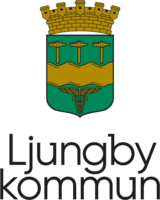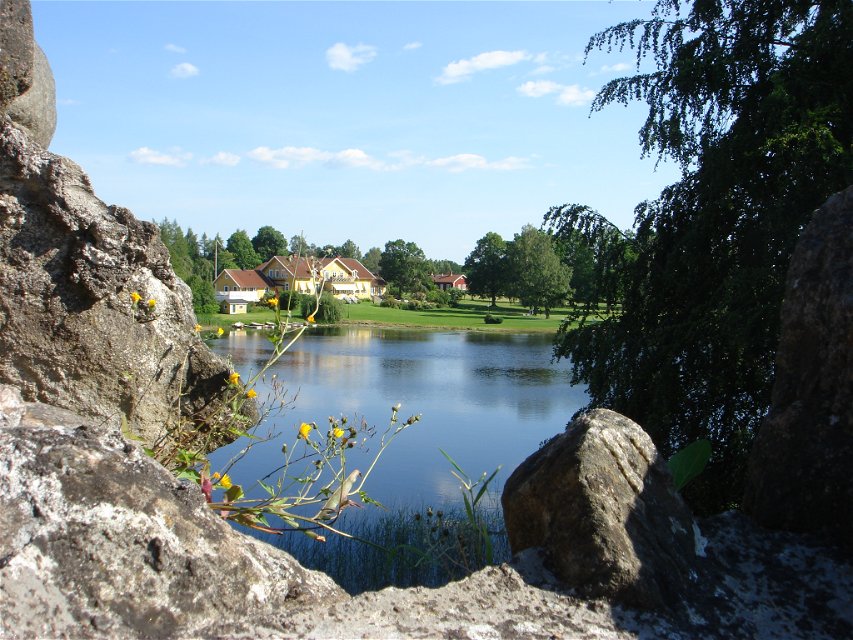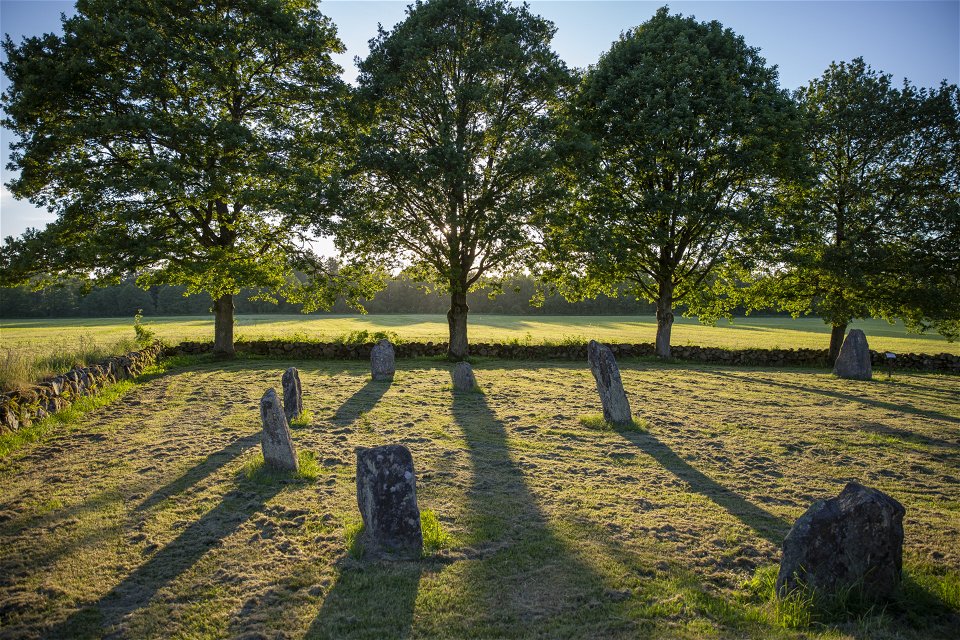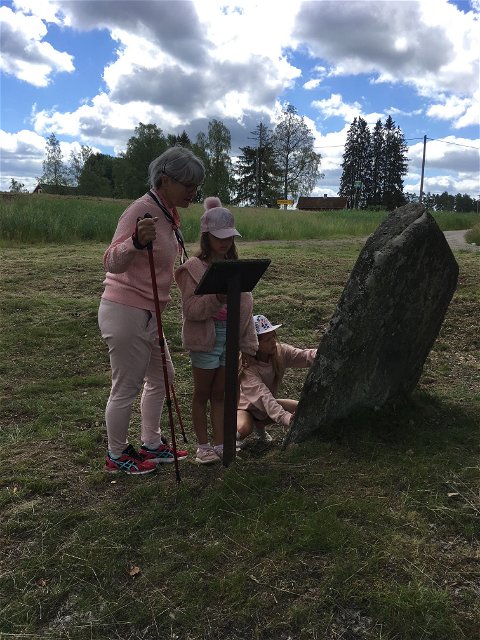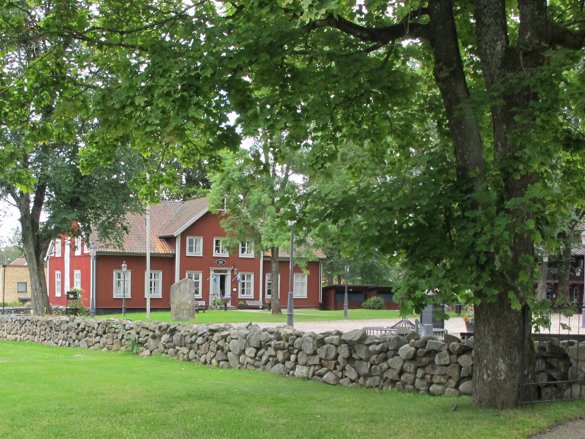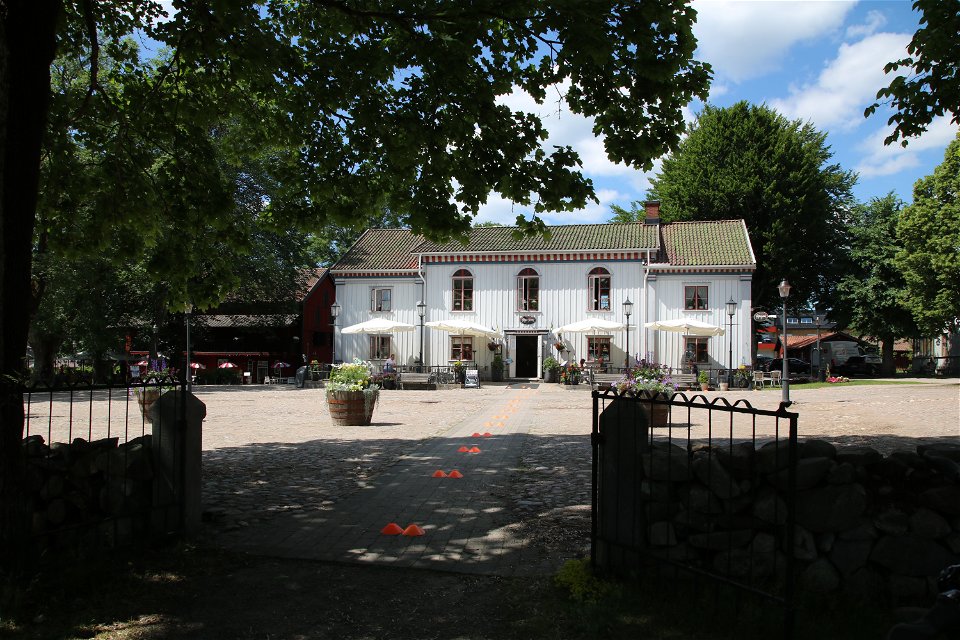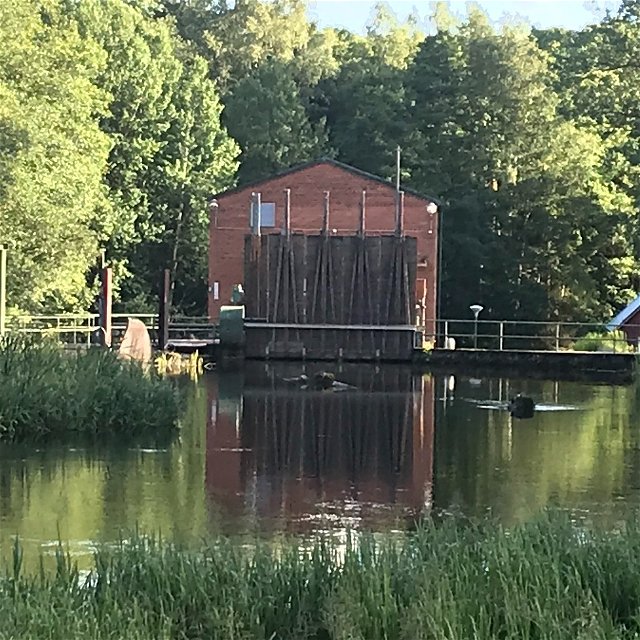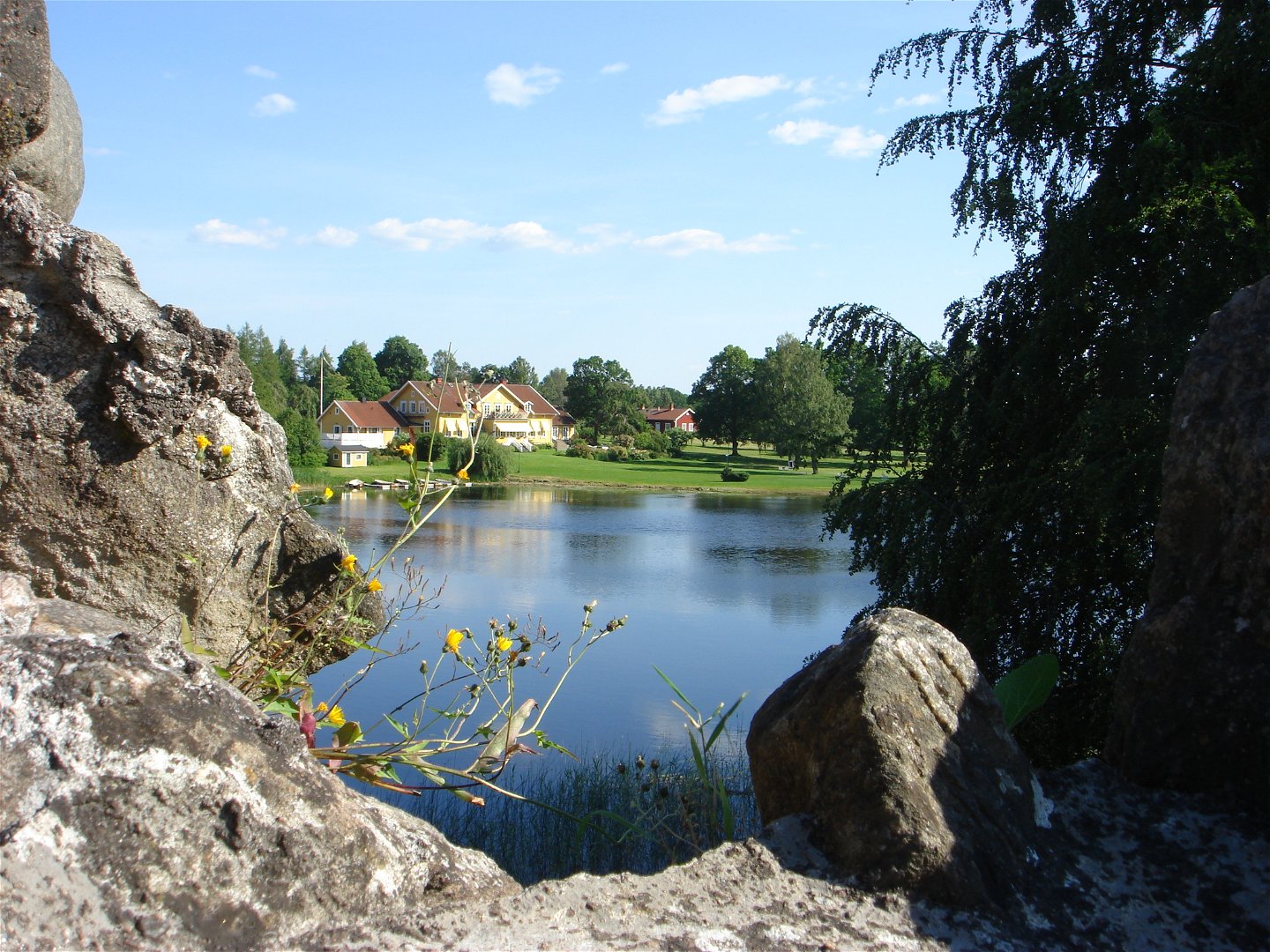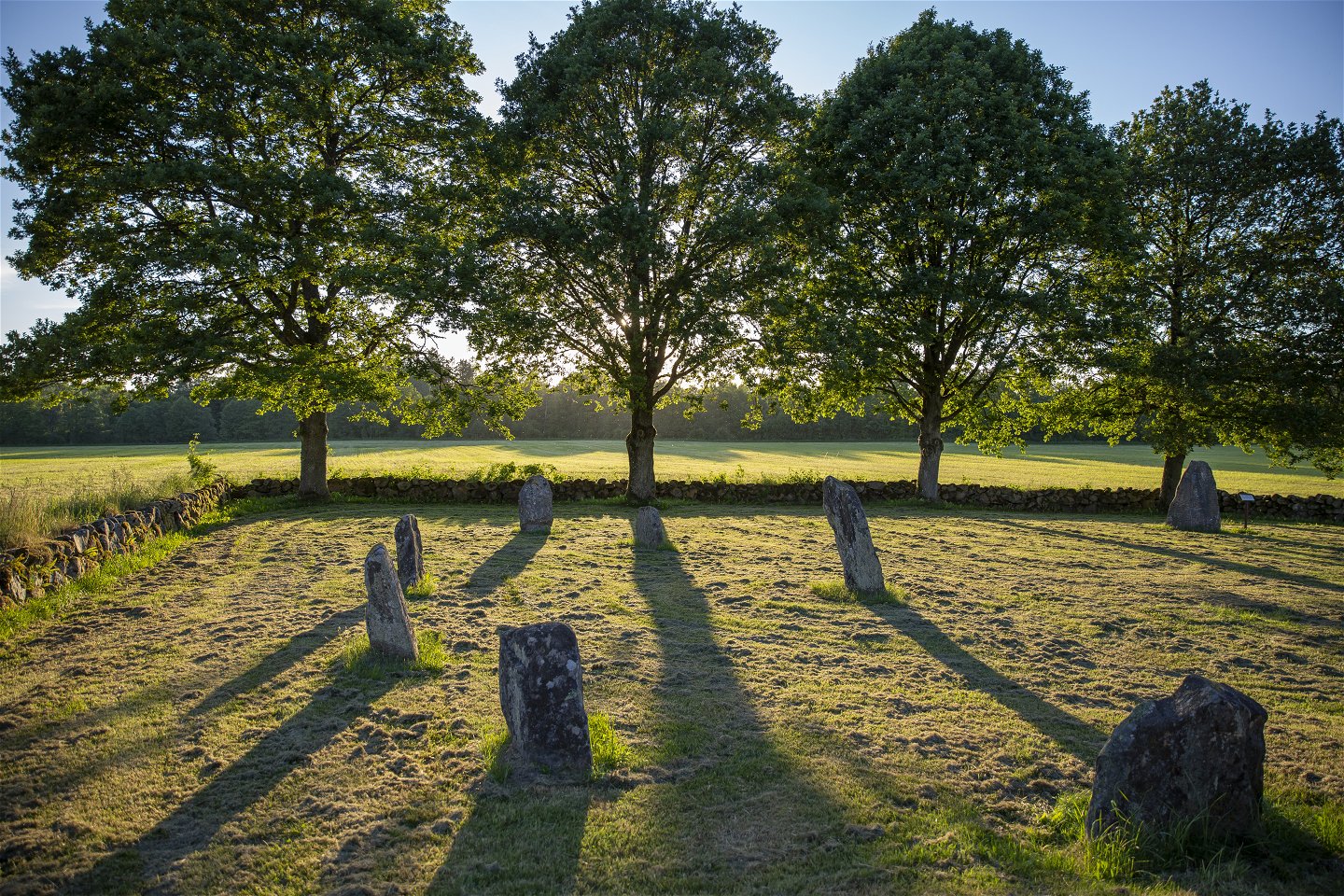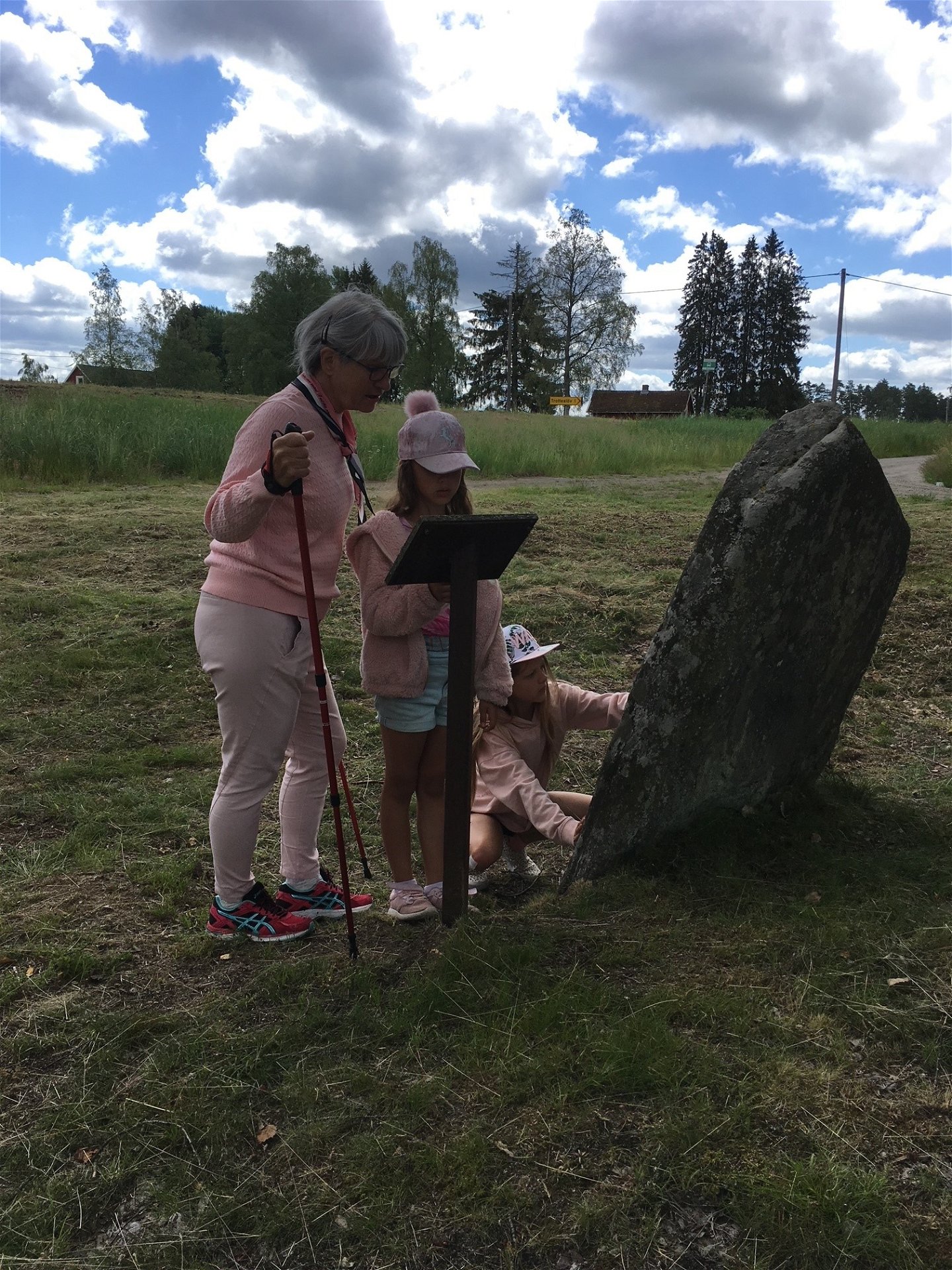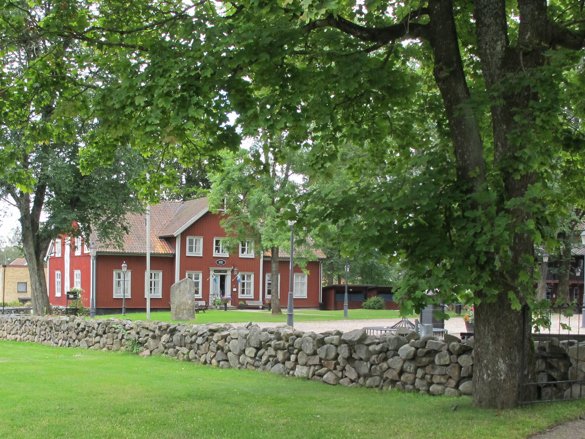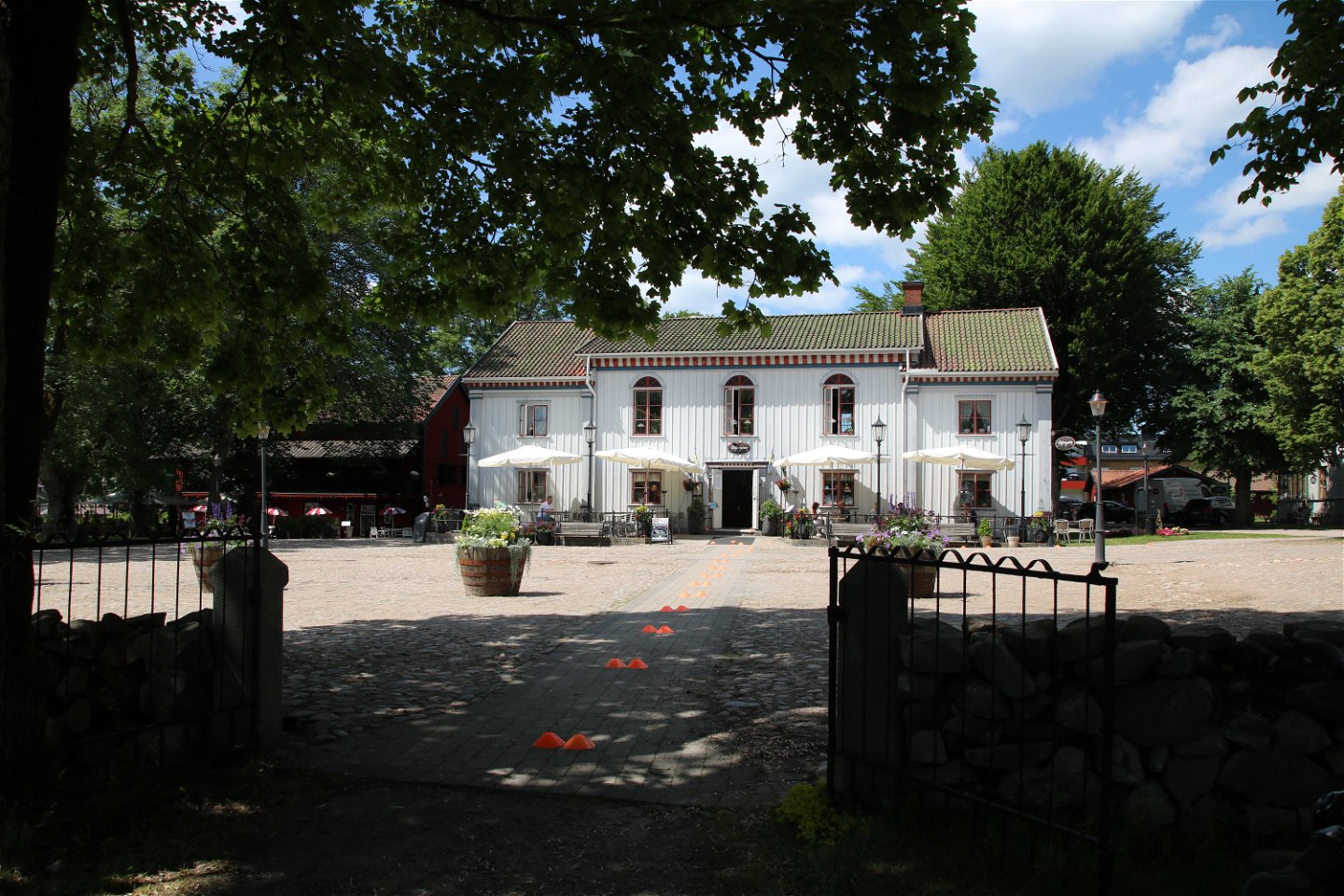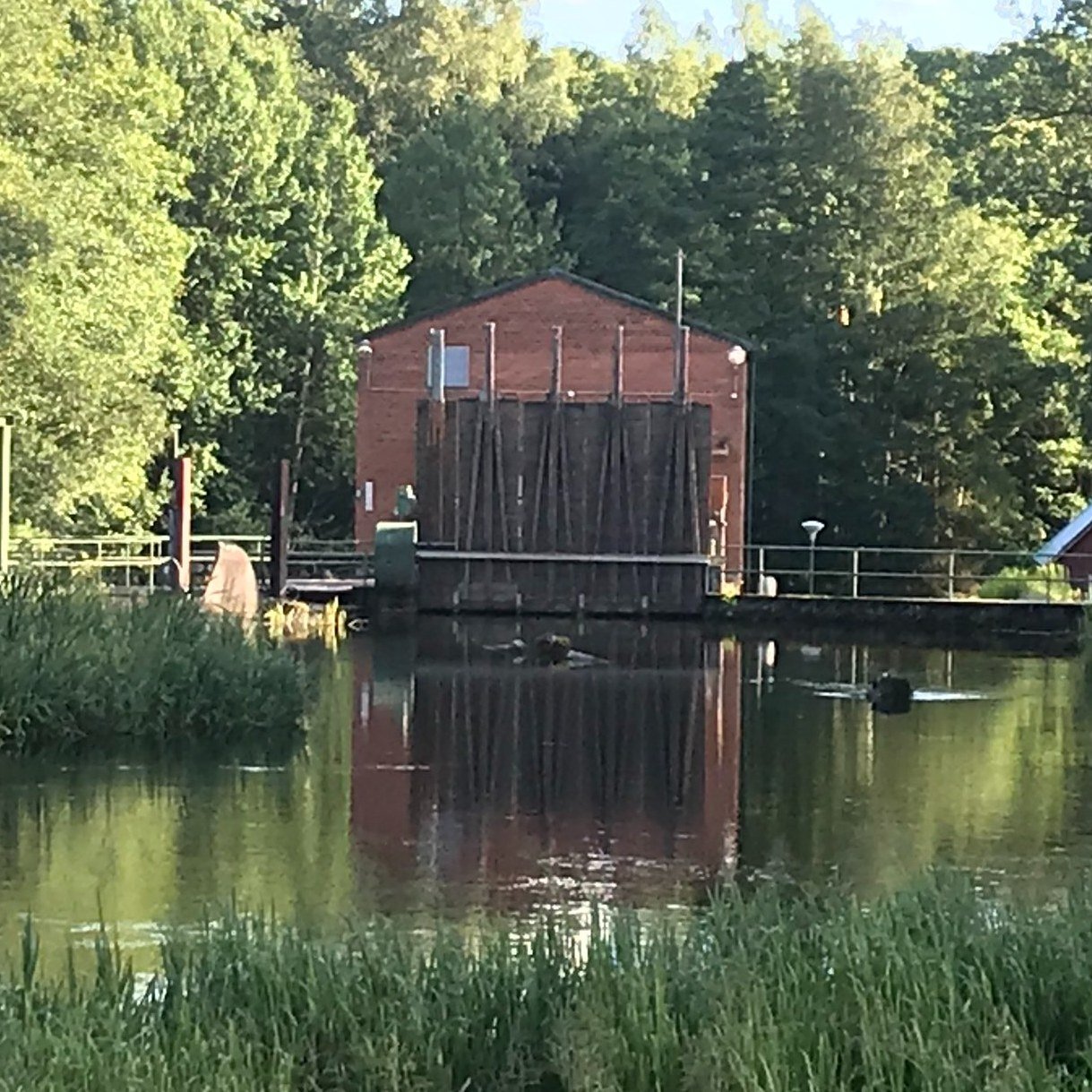Discover Ljungby’s history - visit ‘don’t miss’ and ‘I had no idea’ places
Images
During the winter of 2023, the series “Historien om Sverige” (The History of Sweden) was shown on SVT. In the series, viewers could follow how Sweden evolved from the Stone Age to the present day. Based on the series and its episodes, we have compiled suggestions on how to explore Ljungby’s historical development.
Did you know that Gustav Vasa’s third wife, Katarina Stenbock, lived at Toftaholm? Or that one of Harald Blåtand - Bluetooth’s, Vikings was from Ryssby? Cairns, ancient remains with eerie curses, castle ruins, gallows hills… all of these well-known and lesser-known places have been organized according to themes from the TV series.
Along our trails and paths, you not only have the opportunity to enjoy the fantastic nature on foot, by bike, or from a canoe, but you can also experience beautiful cultural environments, our history, and exciting stories about what has happened. We provide tips on where you can find traces of history yourself.
A rich cultural landscape along the Lagan Valley and Bolmen
In Ljungby, people have lived since prehistoric times, and there is a rich variety of cultural environments, including ancient remains, medieval churches, church ruins, and inns. Did you know that there is a cultural environment program for Ljungby municipality, where you can follow the development that has taken place and how society has evolved? The program covers 36 areas, ranging from Mjäryd to Lagans textile factories. It also describes the areas of national interest that are unique in Sweden. These include Bolmsö kyrkby, Hallsjö, Hamneda, Hörda-Klövraryd, Lida-Husaby, Tjust, Toftaholm, and Trotteslöv-Össlöv-Fallnaveka.
Learn more at Ljungby’s Cultural Environment.
Few areas in southern Sweden play such a crucial role in shaping the character of the cultural environment as in Ljungby municipality. Together with other features, such as communication structures, connections in the landscape become unusually clear.
In Lagadalen, you can find many of the hundreds of ancient remains that surround us. These ancient remains date from the Iron Age all the way back to the Stone Age. Some are well-known, while others have been more or less forgotten for centuries. Some of the remnants are impressive manifestations, built to be seen and leave an impression. The Lagan River’s allure for humans has led to a rich cultural landscape developing along the river. In ancient times, the first paths were created in the valley, resulting in Lagastigen, one of medieval Sweden’s most important roads. Since then, the roads have evolved and expanded.
Along the Lagan River, you’ll find several large burial grounds, and Kånna högar is one of Småland’s largest burial sites from the Iron Age, with nearly 300 graves. Additionally, there are stone circles, three-pronged markers, standing stones, and an Iron Age burial mound.
On the other side of the Lagan River lies one of the county’s largest Bronze Age cairns, Högarör. It measures 30 meters in diameter and stands two meters high. At the top of the mound sits the large cairn from the early Bronze Age, standing majestically alone. The grave was meant to be visible from afar, and if you imagine the view without the spruce trees (which weren’t there when the grave was built), you can appreciate its significance.
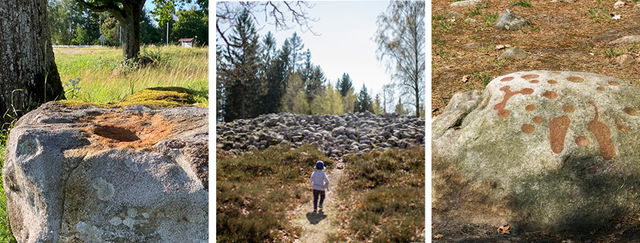
A few miles north on a field in Össlöv, there is a large grave with a ship shape from the later Iron Age. The ship setting is Småland’s largest, measuring 42 meters long and 13 meters wide.
Feel free to take a trip by car or bicycle along Riksettan and discover the ancient remains along the Lagan River.
On Bolmsö, there are three culturally significant areas of interest. Bolmsö kyrkby has five high burial fields from the later Iron Age, including one with standing stones. Lida-Husaby features a rich archaeological environment from the Bronze Age and Iron Age, indicating that Bolmsö was a center during the later Iron Age. Tjust also has ancient remains, showing that the site has been inhabited since the end of the Stone Age up to the Iron Age.
Viking Memorials
Through the Replöstenen stone from the 11th century, we know the name of one of the earliest inhabitants of Ljungby, Åstrad. “Götrad erected this monument in memory of Åstrad, the foremost of the kin and freeholders who once lived in Finnveden.” Today, you can see statues of Astrad and Götrad at Stora torg in Ljungby city center.
Runestones were erected as memorials to deceased relatives in prominent locations during the Viking Age, and many of them still exist today. Some remain where they have always stood, while others have been moved after being found in church walls, bridges, and similar places. It’s fascinating to decipher the runes and ponder who the person was for whom the runestone was raised.
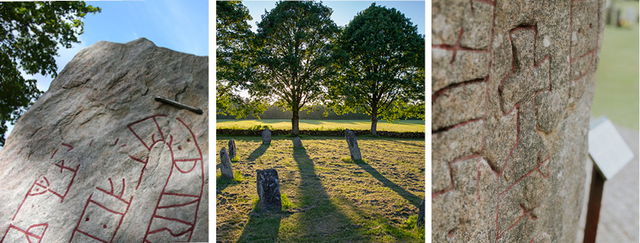
There are several beautiful churches in Ljungby municipality that have their origins in the Middle Ages. Feel free to visit them when they are open. For example, Dörarp Church, Angelstad Church, and Vittaryd Church.
Ljungby - in the midst of the power struggle between Sweden and Denmark
Today, it’s hard to imagine that Ljungby was located in a disputed and ravaged border area, right in the power struggle between Sweden and Denmark when Småland bordered Denmark until the Treaty of Roskilde in 1658. Many castles and defensive structures remain from this time, such as Stenhusholmen in Toftaholm, Tofta skans, Piksborg, Danaborg, Agundaborg, Källarholmen, and Eneborg.
Hamneda was strategically important in military contexts, lying near the border with Denmark. Danish forces moved along attack routes, as did Swedish troops heading toward the enemy. On October 21, 1676, 12,000 Swedish soldiers gathered in Hamneda to be reviewed by King Karl XI. The next day, the army marched south toward Skåne and the Battle of Lund on December 4.
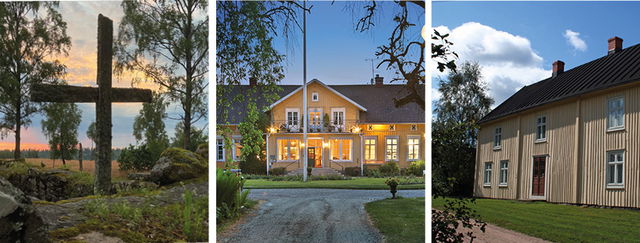
The threat of devastation was imminent, and the Danish troops employed scorched-earth tactics. Throughout Ljungby municipality, there are ruins of churches, castles, and fortifications from the Danish-Swedish wars. Among them is the Hallsjö Church ruin.
It’s fascinating to learn about the historical context in Ljungby. During the 1600s, there was a witch hunt, and Elin in Horsnäs, near Ljungby, became one of the first women in Sweden accused of being a witch. She is the most well-known alleged witch before the major witch hunts later in the 1600s. Despite torture during her trial, she did not confess to being a witch. However, she did admit to murdering her first husband, likely to receive a “milder” execution by beheading instead of burning at the stake. Elin was sentenced to death on September 28, 1611, and subsequently executed.In the early Middle Ages until the 1600s, Hamneda served as a legal meeting place in Sunnerbo härad (district). Although it wasn’t a physical location, the court sessions were held at various places. Ljungby municipality has several sites associated with executions. The executed individuals were not buried in consecrated ground but in mass graves near the execution sites. In Hamneda, a discovery in 2011 suggests that the initial execution site was within Hamneda but was later moved outside the community. Near the old inn at Riksettan, there is a gallows hill. Hamneda’s gallows hill was decommissioned in 1698 when the court moved to Ljungby.In the 1820s, a new courthouse and prison were built in Ljungby. Today, the building that houses the museum on Ljungby Gamla Torg (Old Square) was once the courthouse. The last execution in Ljungby took place on March 27, 1844. According to old maps, the execution site in Ljungby was located near Ljungsjön (Ljung Lake).Märta Ljungberg played a significant role in Ljungby’s history. During the 1700s, Sweden was impoverished after Karl XII’s wars. Ljungby, a small village with a medieval church, sat in a nearly treeless landscape, surrounded by extensive heathland to the south and west. Ljungby had long been a crossroads for important trade routes running north-south and east-west. As early as the 1300s, there was a decree that a guesthouse should be established along Lagastigen. The constant flow of people—on horseback or on foot—included military personnel and government officials traveling to and from the war-affected regions of Skåne and Halland.Märta Ljungberg operated a guesthouse at Ljungby gård (Ljungby Manor). The current Gästgivaregården (Guesthouse) on Ljungby Gamla Torg stands in the same location where Märta Ljungberg ran her guesthouse business around 1820. In addition to the guesthouse, a courthouse and prison were established there. The square also featured a pillory. Märta’s memory lives on in various places in Ljungby, including Märta Ljungbergsvägen (Märta Ljungberg Road) along Ljungby Gamla Torg.Today, Gästgivaregården is a cozy restaurant that still serves traditional Småland cuisine, adapted for modern tastes. The old courthouse building houses a museum, and the other buildings around the square host the Sagomuseét (Fairy Tale Museum), craft shops, and a café. During the summer months, Ljungby Gamla Torg comes alive with events and flea markets, making it a delightful place to visit .The wind of change and development blows at the end of the 19th centuryThe history of Ljungby continues into 1800 and the beginning ofThe 20th century where the wind of change and development blows. A land reform whichcarried out during the 19th century was Laga shift where the farmers exchanged land witheach other and the houses moved out, which created our Swedish countryside therethe farms are spread out instead of in clustered villages. In Hörda-Klövaryd you cansee a lovely Laga shifting landscape with well-preserved buildings along closer to a mile long stretch of road. Most of the farms are in a rowthe farm buildings facing the highway. Hörda by is one of the longestthe villages south of the Dalälven. It was not only the new land reform thatchanged the landscape but also the new demand for hydropower. One ofsouthern Sweden's first hydroelectric plant was built in Skålån at the beginning of the 20th century.Åbyfors thus had electricity before Malmö, which first got electricity after ån Lagan's firstpower station was built in Knäred in 1910. Since then, several statelypower stations have been built in the river Lagan with tributaries, several of which are in Ljungbymunicipality. Of course they are beautiful! It is powerful to stand at the floodgates and hearthe water gushing. Remember to keep a safe distance and do not enter private land.
Ljungby becomes a city and the city grows In 1828, Ljungby became a purchase in fierce competition with society The law. This then Berga (The law) already in 1279 had the right to found a city after a decision from Magnus Barn lock. At the end of the 19th century, the railway came to Ljungby and contributed to the growth of Ljungby köping. During the 19th century, the center was moved from Gamla Torg to Storgatan and Stora Torg and in the coming decades became the buildings more urban. At the beginning of the 20th century, Ljungby köping was transformed into Ljungby municipal society. Two fires have contributed to the modern cityscape. The the great city fire in 1953 which destroyed large parts of the center as well The city hotel fire in 1960. This has caused the central parts of Ljungby is dominated by period-typical 1950s and 1960s architecture with stone buildings and concrete. In 1936, Ljungby finally received its city rights. When there were about 5,000 inhabitants living in the city, compared to today's about 16,000. At the municipal merger in 1971, Ljungby was merged with the country municipalities of Annerstad, Berga, Hamneda, Ryssby, Lidhult, Tannåker and the island of Bolmsö. Together they form now one of the largest municipalities, geographically speaking, in southern Sweden with almost 2 000 square kilometers. And with the largest lake within the landscape Småland and with Småland's largest island, Bolmsö, this is a municipality that you like want to visit.
Contact
Email address
Organization logotype
